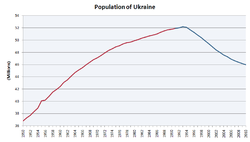The economy of Ukraine Ukraine Ukraine ’s
GDP fell sharply for the first 10 years of its independence from the Soviet Union and then experienced rapid growth from 2000
until 2008
The country's economy experienced a deep recession
during the 1990s, including hyperinflation and a drastic fall in economic
output In 1999, at the lowest point of
the economic crisis, Ukraine's per capita GDP was about half of the per capita
GDP it achieved before independence.
Agriculture:
Ukraine a major global producer of grain and sugar,
and future global player on meat and dairy markets It is the world's largest producer of
sunflower oil, and is also one of the largest producers of nuts. Ukraine
Since Ukraine
Mining:
Coal reserves in Ukraine Ukraine


Oil & Fuel industry
Communications & Information technology
Almost 20 million Ukrainians had Internet access in
December 2012. In Kyiv 90% of population
had internet access. The number of
Internet users in Ukraine
The mobile-cellular telephone system's expansion
has slowed, largely due to saturation of the market which has reached 125
mobile phones per 100 people.
Financing, banking, and Investments
The EU isUkraine Russian
Federation is Ukraine China , threatens
prospects for Ukraine
State enterprise InvestUkraine was created under the State Agency for Investment and National Projects to serve as a One Stop Shop for investors and to deliver investment consulting services.Ukraine Ukraine
The EU is
In 1992, Ukraine became a member of the IMF and the World Bank. It is a member of the European Bank for Reconstruction and Development and in 2008 the country joined World Trade Organization. The IMF approved a $2.2 billion Extended Fund Facility (EFF) with Ukraine in September 1998. In July 1999, the 3-year program was increased to $2 6 billion. Ukraine 's failure to meet monetary targets and/or structural reform commitments caused the EFF to either be suspended or disbursements delayed on several occasions. The last EFF disbursement was made in September 2001
A political crisis in the middle of 2006 was feared as a threat to economic and investment stability, however, despite the forecasts, the political situation has not scared investors. The GDP showed a good growth rate of 7% in 2007, compared to the previous year. Industrial output has increased and car sales soared, while the banking sector has expanded, thanks to the arrival of several major European banks.
Ukraine encourages foreign trade and investment The Parliament of Ukraine has approved a foreign investment law allowing Westerners to purchase businesses and property, to repatriate revenue and profits, and to receive compensation if the property is nationalized by a future government However, complex laws and regulations, poor corporate governance, weak enforcement of contract law by courts, and corruption all continue to stymie direct large-scale foreign investment in Ukraine. While there is a functioning stock market, the lack of protection for shareholders' rights severely restricts portfolio investment activities
State enterprise InvestUkraine was created under the State Agency for Investment and National Projects to serve as a One Stop Shop for investors and to deliver investment consulting services.


.jpg)

.jpg)
.jpg)

.jpg)
